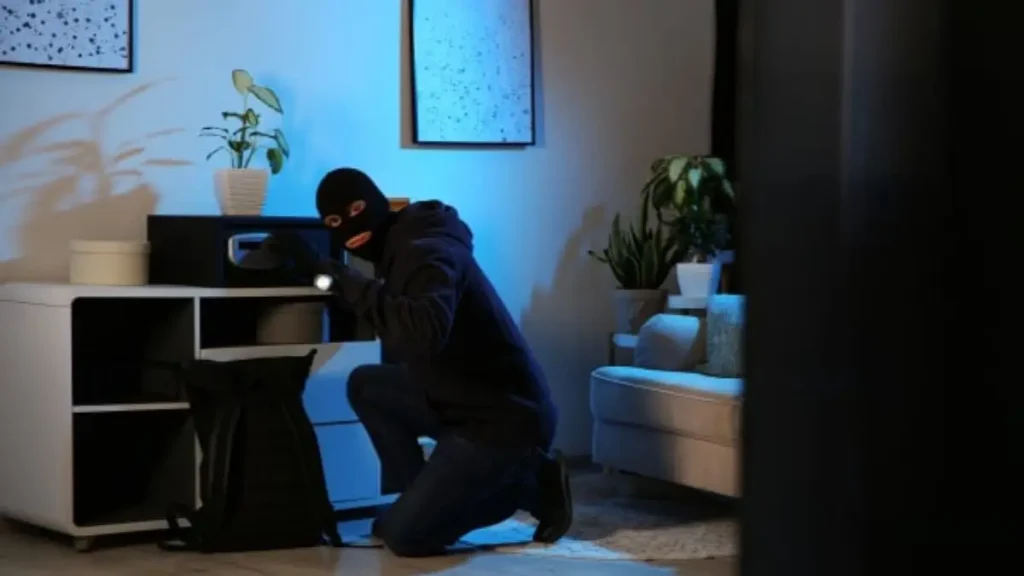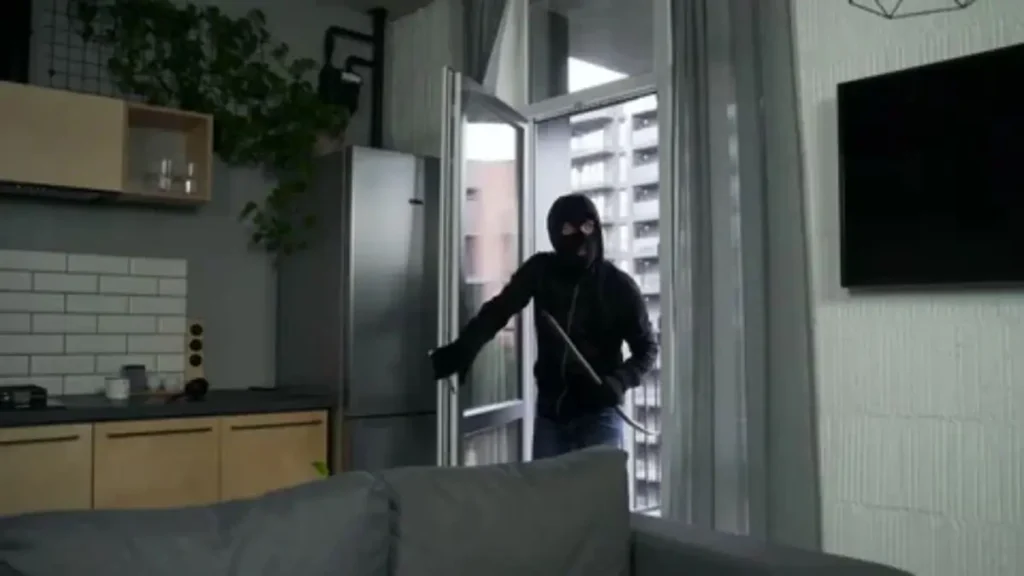Maryland Resident Arrested Following Home Invasion in Calvert County
When I first came across this Maryland home invasion case, what caught my attention wasn’t just the violence — it was the layers behind it. A 53-year-old man from Glen Burnie, Jermaine Alphonso Holland, is now facing a series of serious charges in Calvert County after police linked him to a brutal break-in in Owings.
According to investigators, the incident happened in the early hours of September 21, 2024. A man inside his home was attacked after what seemed like a normal evening of having friends over. Within minutes, the celebration turned into chaos — three men forced their way inside, assaulted him, and left with two gold chains worth barely a few hundred dollars.
What makes this story unsettling isn’t just the act itself but how quickly an ordinary night in a quiet Maryland neighborhood turned violent. As someone who follows local safety and community crime reports, I can’t help but think about how fragile that sense of security can be. You invite people into your space, you let your guard down — and then something like this happens.
Police say Holland was identified after weeks of digging through social-media posts, photographs, and witness interviews. He’s now being held without bond as he faces a long list of charges — including home invasion, armed robbery, assault, and firearm offenses — while local prosecutors prepare for the next hearing in December.
Stories like this remind me that crime isn’t always random. It often grows out of personal connections, old grudges, or impulsive decisions that spiral fast. And if you live in Maryland — or anywhere, really — it makes you think: How well do we really know the people we let into our homes?
Do you think incidents like this reflect a deeper issue — maybe how social circles and social media overlap in risky ways — or are they isolated cases that just make the news?
The Night of the Home Invasion

When I looked into what happened that night in Owings, the timeline painted a disturbing picture. It was just after two in the morning on September 21, 2024, when deputies and paramedics rushed to a home on Lower Marlboro Lane. Inside, a man was being treated for serious injuries after what police described as a violent home invasion.
According to Southern Maryland News, the victim had hosted a small house party earlier that evening. After the last guests left, three men allegedly broke in through a locked door. The resident told police one of them struck him with the handle of a pistol and took the two chains he’d been wearing — worth around $350 in total.
It’s one of those moments that makes you uneasy. You imagine the quiet after a party, the cleanup, the sense of calm — and then the door bursts open. Ordinary homes aren’t supposed to turn into crime scenes, but sometimes they do, in the most unexpected ways.
Investigation and How the Suspect Was Identified
Detective Edward Yates from the Calvert County Sheriff’s Office led the investigation, and what stood out to me was how detailed his process was. He didn’t rely on a single clue — he pieced it together through social-media posts, witness interviews, and even vehicle registration photos.
After weeks of work, the pieces began to fit. Evidence pointed toward Jermaine Alphonso Holland, a 53-year-old from Glen Burnie. Yates noted in his report that not every detail could be released publicly, but the evidence was strong enough for prosecutors to move forward.
I’ve covered enough local cases to know: detectives don’t talk about “larger conspiracy” unless they see signs of something more organized. That hint alone changes how this story feels — less like a random attack, more like part of a deeper pattern.
It reminded me of another case I covered in California, where San Jose police tracked down five suspects after a reported home burglary using neighborhood camera footage and social media clues.
Charges Filed Across Two Maryland Counties
Here’s where the case grows more serious. Before the Calvert County charges were even filed, a Worcester County grand jury had already indicted Holland on ten separate counts. Those include felony theft, theft scheme, vehicle theft, and participation in a criminal organization.
Then came the Calvert County case — first-degree assault, second-degree assault, home invasion, armed robbery, firearm use in a violent crime, and handgun in a vehicle. Holland is being held without bond at the Worcester County Detention Center in Snow Hill. His jury trial for the Worcester charges is scheduled for March, and his Calvert County hearing is set for December 8.
The overlap between counties shows just how connected some of these cases can be in Maryland’s criminal system. It’s not one small case in isolation — it’s a web of investigations, overlapping jurisdictions, and ongoing coordination between offices.
I’ve been following similar updates through a local WhatsApp news channel that tracks Maryland court hearings and police updates — it’s surprisingly helpful if you like staying in the loop between official press releases.
The Bigger Picture — Gang Links and Conspiracy Leads

What complicates this case further are the possible gang links behind it. Investigators mentioned that one of the teenage guests at the party — just sixteen years old — may have had ties to a local gang. During the assault, the attackers reportedly said, “She told us you hit her.” That line stuck with me. It sounds impulsive, but it also points to a personal grudge or a larger group dynamic at play.
At one point, the Maryland Attorney General’s Office even looked into the case as part of a broader conspiracy investigation before handing it back to local prosecutors. That detail barely gets a line in most reports, but it’s huge. It shows that authorities saw potential links to a wider network — something you rarely hear about in typical home-invasion coverage.
These cases remind me how easily personal conflicts can spiral when mixed with group loyalties, social media, and late-night decisions. It’s not just crime — it’s human chaos playing out in real life.
We’ve seen similar patterns elsewhere — like a Phoenix home burglary that turned violent over a personal dispute gone wrong.
Maryland Home Invasion Trends and Safety Awareness
Whenever I read stories like this, I find myself looking beyond the names and charges to the larger trend. Maryland’s local law enforcement has reported steady concern over violent break-ins across the southern counties, often involving acquaintances or party-related disputes rather than strangers.
If you host gatherings or live alone, it’s worth thinking practically. Know who’s in your space, keep doors secured even after guests leave, and be mindful of what you share online — because investigators often find their best leads there, and so can people with bad intentions.
According to FBI data from recent years, home invasions make up a small but rising share of violent residential crimes in Maryland. That rise isn’t about chance — it’s about opportunity. Late-night parties, valuables in plain view, and public social posts all create openings.
It’s easy to assume these things only happen to other people, but safety often comes down to small habits: locking up, checking your cameras, and staying aware of who knows your routine. And maybe, after reading this, you’ll take a moment to think about what “safe at home” really means.
And in Florida, authorities are still searching for suspects in another armed home invasion — a reminder that these stories stretch far beyond one state’s borders.
What Happens Next — Trial and Case Status
As of now, Jermaine Alphonso Holland remains behind bars at the Worcester County Detention Center, waiting for the legal process to move forward. His Calvert County hearing is set for December 8, while a jury trial in Worcester County—for the separate but connected charges—is expected in early March.
That might sound like just a few lines in a court calendar, but it’s a reminder of how long these cases take. Months can pass between arrest and trial. Evidence gets reviewed, witnesses are called again, and sometimes stories change. For the victim, it means a long wait for closure. For the community, it’s another case sitting quietly in the background until the next headline appears.
I’ve seen this cycle play out too many times: a burst of attention when charges are filed, then silence until sentencing. But justice isn’t quick, and it’s not simple. It moves at the speed of paperwork, court dockets, and human memory.
If you live in Maryland or follow local safety updates, keep an eye on this one. It ties together two counties, multiple agencies, and a larger investigation that’s still not fully explained. And more than anything, it highlights how fragile that line is between feeling safe at home and becoming part of someone else’s story.
So I’ll leave you with this — what do you think “justice” should look like in a case like this? Is it just about punishment, or about understanding the deeper causes that lead to crimes like these?
If stories like this interest you, check out more real-life home security incidents and safety insights on our website Build Like New. Staying informed isn’t fear — it’s preparation.
Disclaimer: All information in this article is based on public court documents and official law enforcement reports. The investigation is still ongoing, and charges have not yet been proven in court. The defendant is presumed innocent until proven guilty under Maryland law.


